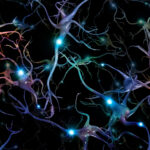### Investigating Precision Diagnostics Using Integrated Multi-Modal Alzheimer’s Data
Alzheimer’s disease is a complex condition that affects millions of people worldwide. Diagnosing and managing Alzheimer’s requires precise and accurate methods to ensure the best possible care for patients. Recently, researchers have been exploring new ways to diagnose Alzheimer’s using integrated multi-modal data. In this article, we will delve into the latest advancements in precision diagnostics for Alzheimer’s disease.
#### The Role of Imaging Tests
One of the most significant advancements in Alzheimer’s diagnosis is the use of imaging tests. Positron Emission Tomography (PET) scans, specifically amyloid and tau PET scans, have become the gold standard for diagnosing Alzheimer’s. These scans help detect the presence of amyloid plaques and tau tangles in the brain, which are hallmarks of the disease[1].
The Alzheimer’s Association and the Society for Nuclear Medicine and Molecular Imaging (SNMMI) have released updated guidelines for the appropriate use of these imaging tests. The guidelines emphasize that these tests should only be used when the results will directly impact patient care, such as determining the cause of cognitive issues or eligibility for new treatments[1][4].
#### Multi-Modal Imaging and Clinical Scores
Researchers are also exploring the use of multi-modal imaging techniques combined with clinical scores to improve diagnosis accuracy. A recent study introduced a multi-modal 3D Inception-v4 model that leverages transfer learning to diagnose Alzheimer’s disease using MRI and clinical score features. This model showed significant improvement in classification accuracy compared to other methods, highlighting the importance of integrating multiple data sources[2].
#### Biomarkers and Machine Learning
Another area of research focuses on using biomarkers and machine learning models to predict early Alzheimer’s disease. The Tau Seed Amplification Assay (Tau-SAA) is a promising tool for detecting tau pathological aggregates in patients’ samples. This assay has the potential to identify compounds that inhibit tau aggregation and spreading, which could lead to new therapeutic targets[3].
#### AI and Bioinformatics
Artificial intelligence (AI) and bioinformatics are also being integrated into Alzheimer’s research. The Alzheimer’s Disease Analysis Model Generation 1 (ADAM) is a multi-agent large language model framework designed to analyze multi-modal data, including microbiome profiles, clinical datasets, and external knowledge bases. This model synthesizes insights from diverse data sources and contextualizes findings using literature-driven evidence, enhancing the understanding and detection of Alzheimer’s disease[5].
### Conclusion
Investigating precision diagnostics using integrated multi-modal Alzheimer’s data is a rapidly evolving field. The combination of advanced imaging techniques, multi-modal data analysis, biomarkers, and AI is revolutionizing the way we diagnose and manage Alzheimer’s disease. These advancements not only improve diagnostic accuracy but also provide new avenues for therapeutic development, ultimately leading to better patient care and outcomes.
By continuing to integrate and analyze multi-modal data, researchers are getting closer to developing more precise and effective diagnostic tools for Alzheimer’s disease. This integrated approach holds great promise for improving our understanding of this complex condition and for developing more personalized treatments in the future.



